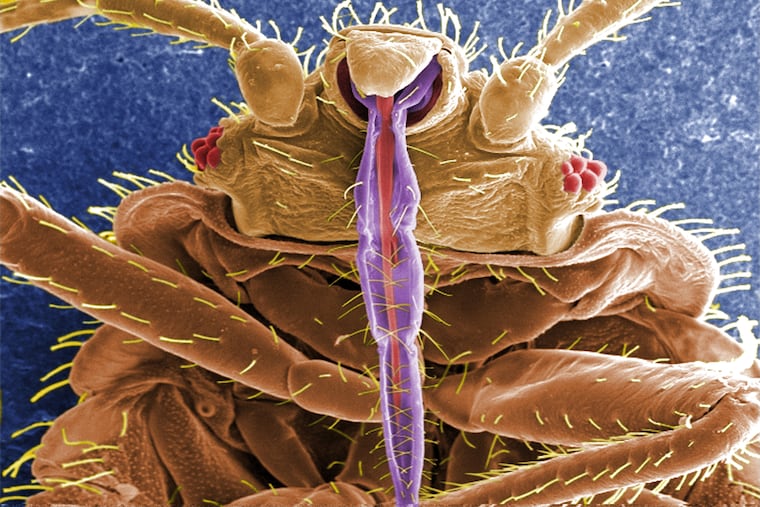Could Paris bedbugs come to Philly? Sure, but that’s assuming we don’t already have them.
Philly’s in the top three of most bedbug-infested cities in the U.S.

When social media posts of bedbugs infesting Parisian homes, hotels, and public transportation went viral in early October, people panicked at the thought of a localized invasion.
It couldn’t have been worse timing for the French city, with the infestation beginning right before Paris Fashion Week and next summer’s Olympic games in Paris. But the question remains: Could these Parisian bedbugs make their way to Philadelphia?
Bed bugs from Paris could come to Philadelphia as they are good hitchhikers and hide in purses, backpacks, and travelers’ luggage. Luckily, there haven’t been widespread reports of bedbugs jumping the pond yet.
That’s also assuming Philly isn’t already infested: Philadelphia is ranked among the top three most bed bug-infested cities in the U.S., according to the pest control company Orkin. (Granted, we have yet to get to the point of bedbugs covering trains like in Paris; in the past, a photo of what was said to be bedbugs on a bus seat prompted swift action by SEPTA.)
What’s more of a concern is the resurgence of bedbugs in general, say experts. Since the banning of certain insecticides, including DDT, used against cockroaches and other pests, bedbugs have had the chance to spread again, said Michael Skvarla Pennsylvania State University’s entomology professor who runs the school’s Insect ID Lab and cohosts the entomology podcast, Arthro-Pod.
“We got secondary control of bedbugs when we were trying to control cockroaches with insecticides — they kill everything — but when you stop using those, you lose that secondary control of bedbugs, and they’re able to recolonize the habitats that they were eliminated from in the past,” Skvarla said.
Additionally, the farther out from the COVID-19 restrictions people get, the more international travelers there are bringing luggage, and possible bedbugs, to popular travel destinations — like Paris or Philadelphia.
“The pandemic, where people stayed in their homes for extended periods of time without allowing others in, is suspected to have allowed hidden populations of bedbugs to grow unnoticed. They’re now spreading into neighboring areas and being transported to new ones,” said Orkin’s technical services manager, Ian Williams.
Increased travel to one of the most visited cities in the world has exacerbated Paris’ issue and the media attention is making people more vigilant in looking for them, said Williams.
Even if Philly’s bedbugs aren’t as severe as they are in Paris, here’s what you need to know just in case.

What are bedbugs?
Bedbugs are small reddish-brown bloodsucking insects that can be seen by the human eye, sort of like a tick without the ability to carry diseases, and don’t pose any severe health risks, said Jim Fredericks, the National Pest Management Association’s chief entomologist who grew up in Northeast Philadelphia.
“Unlike a tick that takes a bite and hangs on for 12 to 24 hours, bedbugs will feed over the course of like 10 minutes and then leave their host,” Fredericks said. “They take their drink of blood and go hide; typically that’s gonna be in a crack or a crevice.”
Bedbugs get their name because they attach themselves to humans when the host is sedentary, like while sleeping in bed. After they feed on a host, they tend to hide somewhere close like the mattress, bed frame, or even under nearby picture frames hung on the wall, said Fredericks.
When they bite, they can leave marks, leading to skin irritation, rashes, discomfort, and, in some cases, allergic reactions, said Williams.

How to prevent bedbugs
When traveling, check your hotel room’s bedding for any signs of bedbugs, like the shell of a bed bug that has shed its skin or bed bug fecal matter, which looks like tiny dark red spots (liquefied blood poop). Also, be sure to inspect the seats in taxis and public transportation.
Before you store your luggage when you get home from a trip, make sure to double-check for possible bedbugs.
Store your luggage, purses, and backpacks away from your bedroom and sleeping areas. Bedbugs love humans that are sitting or laying still, so place those belongings in the basement, closet, or a place that’s away from the bedroom and congregating areas.
If you buy or receive furniture, secondhand or new, examine all parts of it before bringing it inside your home.

I found bedbugs. What do I do?
Bedbugs aren’t something that a renter or homeowner can get rid of on their own. Professional help from pest control companies is the best bet. You can find local exterminators through the National Pest Management Association’s exterminator finder tool at pestworld.org/find-local-exterminators.
While waiting for an exterminator, there are a few steps to take that will help, said Williams.
Isolate the area where bedbugs are found, and avoid removing furniture from the infested room, including the mattress, to prevent bedbugs from spreading.
Straighten up the clutter in infested rooms to make it easier to spot bedbugs.
Wash bedding, curtains, and clothing in the washer using hot water, and dry them on high heat to kill any bugs or eggs.
“A pest control company will inspect your home, identify the source of the problem, and create a treatment plan that will eliminate these pests,” said Williams. “If you wait too long to get help, the problem only gets worse.”